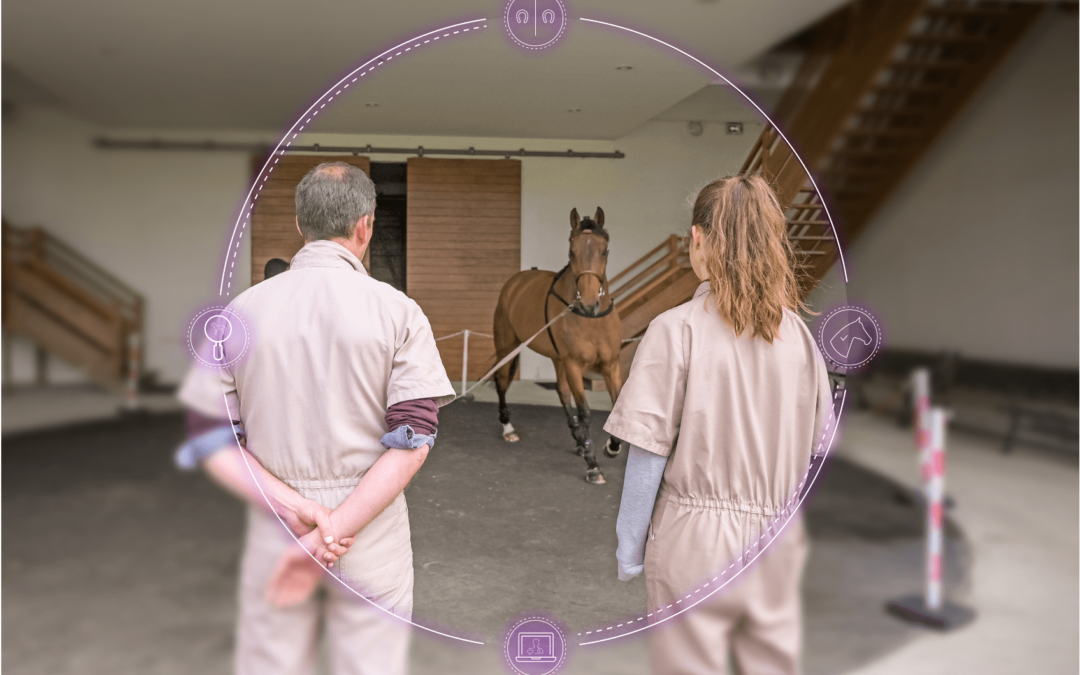We had the pleasure to discuss with Professor Henry CHATEAU about the evolution of equine locomotion quantification systems. Discover, through the example of EQUISYM, how these innovations have an impact on clinical research and veterinary training.
On the agenda:
Could you please introduce yourself?
I am an anatomy teacher, program director at Alfort Veterinary School, and a researcher in equine biomechanics. I was involved in the development of the EQUISYM system, in collaboration with CIRALE-EnvA clinicians.
How does EQUISYM contribute to the development of veterinary knowledge?
The EQUISYM system helps to create and disseminate knowledge in the field of horse lameness management. It is thus useful for research and teaching.
1. EQUISYM, a research tool
EnvA’s biomechanics and locomotor pathology team has been working on horse locomotor problems for more than 30 years. The main goal is to increase a better understanding of how the locomotor system works. This is done by describing standard movements and their abnormalities.
The research tools used to understand and describe these situations are often very specific and challenging (motion capture cameras, force platforms, etc.). They require engineering experts. In comparison to these complex tools, the aim of EQUISYM is to make the measurement of specific locomotion parameters accessible to a wider range of people who are not necessarily researchers.
EQUISYM makes biomechanical measurement affordable for all veterinarians. While supporting their diagnosis, the tool takes biomechanical measurement out of the restrictive context of the research laboratory and into the field. In the coming years, this represents a real opportunity because pooling these data enables the expansion of databases as well as the optimization of analyses and interpretation. Field studies can now be done on a bigger scale and with standardized equipment, increasing the strength of statistical tests.
Today, EQUISYM is used on a daily basis at CIRALE to assist in the diagnosis of lameness, but it is also used in clinical research studies. For example, during clinical trials, the tool is extremely useful for objectively quantifying the evolution of lameness with quantifiable parameters. It is a valuable tool for standardizing and statistically comparing case-control study results.
2. EQUISYM, a training tool
Regarding the educational part, learning what lameness is and how to detect it is a long and complex exercise because the movements to be perceived are subtle and performed at a relatively fast speed. Visually appreciating lameness is a difficult act that requires a lot of experience. To be practiced in an autonomous way, it is important to train the eye.
From a pedagogical aspect, the interest of EQUISYM is to provide a graphical explanation (particularly through the vertical displacement curves of the head, withers, and croup) of the zones of interest and their normal and abnormal movements. This is useful for two reasons: understanding and training.
The use of such a tool for training has numerous advantages. In the beginning, it allows being reassured by comparing one’s subjective opinion to standardized data. In order to learn, it is important to be able to rely on a reference system, and these tools permit learning guided by objective data.
EQUISYM is used on a large number of horses at the CIRALE. Each horse is examined with a group of students, and when the clinicians explain the case to the students, the curves can be used to study and comment on the different phenomena observed.
E-learning modules using the system are also in development. To learn how to identify a lameness, it is obviously necessary to be exposed to real cases, but to be more efficient in the field, it is useful to train on typical cases recorded as videos and reproducing the scenario of a real situation. This is the principle of the e-learning module. Students can practice identifying and grading lameness. To better guide them in their learning, feedback on their answers can be supplemented with objective data from EQUISYM.
Keywords: Henry CHATEAU, EnvA, CIRALE, equine veterinarians, locomotion quantification, equine locomotion, clinical research, training, horse lameness


